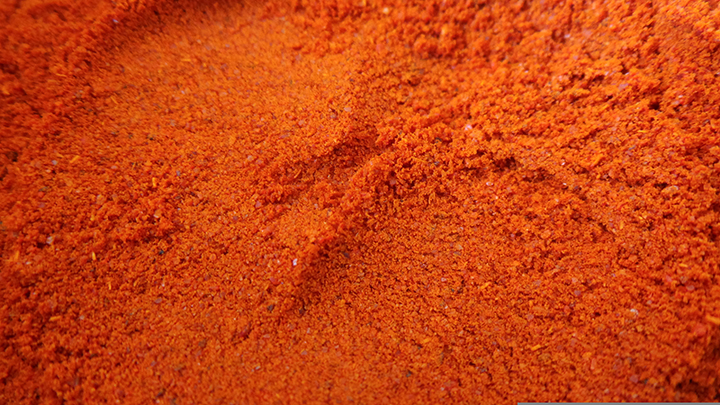Paprika is a spice made from ground, dried fruits of Capsicum annuum, which is a type of pepper. It is a popular seasoning in many cuisines around the world, known for its vibrant red color and rich flavor. Here are some key points about paprika:
Varieties: There are several varieties of paprika, and they can be classified based on the type of pepper used and the processing method. Common types include sweet (mild), hot (spicy), and smoked paprika.
Capsicum annuum: Paprika is made from peppers belonging to the Capsicum annuum species, which also includes bell peppers and chili peppers. The specific variety of pepper used can influence the flavor and heat level of the paprika.
Flavor Profile: Paprika can have a mild, sweet, or hot flavor, depending on the variety. Sweet paprika is the most commonly used and is often used to add color and a mild, fruity flavor to dishes. Hot paprika, on the other hand, can add heat and intensity to recipes. Some varieties of paprika, particularly those from Spain, are smoked to enhance their flavor. This process involves drying the peppers over open flame or wood smoke. The result is a distinctive smoky flavor that can add depth to a variety of dishes.
Culinary Uses: Paprika is a versatile spice used in a wide range of dishes, including stews, soups, rice dishes, and grilled meats. It is a key ingredient in many traditional dishes, such as Hungarian goulash, Spanish paella, and various Middle Eastern and Mediterranean recipes.
Health Benefits:
-Rich in Antioxidants: Paprika contains antioxidants like capsanthin, capsorubin, beta-carotene, and quercetin, which help in reducing inflammation and protecting cells from damage caused by free radicals.
-May Improve Eye Health: It’s high in beta-carotene, which can be converted into vitamin A in the body. Vitamin A is essential for maintaining healthy vision, skin, and immune function.
-Aids in Blood Formation: Paprika is a good source of vitamin E, which plays a role in producing red blood cells and keeping blood vessels healthy.
-Anti-inflammatory Properties: The capsaicin in certain types of paprika may have anti-inflammatory properties, which can be beneficial in reducing swelling and pain in conditions like arthritis.
-Supports Healthy Digestion: Paprika can stimulate saliva and stomach acids, which aid in the digestion of food.
-Have Anticancer Properties: The antioxidants in paprika might help in preventing certain types of cancer, though more research is needed in this area.
Colorant: Paprika is often used not only for its flavor but also for its vibrant red color. It is a common ingredient in spice blends and rubs for meat, as it imparts a visually appealing hue to dishes.
Nutritional Content: Paprika is a good source of vitamins and minerals, including vitamin A, vitamin E, and antioxidants. It can contribute to the overall nutritional content of a dish.
Storage: Like many spices, paprika should be stored in a cool, dark place to preserve its flavor and color. Exposure to light and heat can cause it to lose its potency.
Paprika is a versatile spice that adds both flavor and color to a variety of dishes, making it a popular choice in kitchens worldwide. Different cultures have incorporated paprika into their cuisines in unique ways, contributing to the spice’s global popularity.
Stephanie Westbrook




